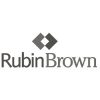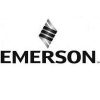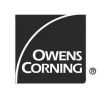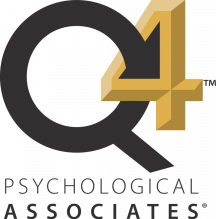The use of formal assessment tools — specifically, psychometric testing — for hiring decisions is on the rise. And, as recent pieces in Time and The Wall Street Journal attest, this testing, like any business process, has both its critics and defenders.
So why are more and more companies turning to formal assessment when making hiring decisions? Is it just an HR department fascination with big data? Or is there solid evidence that the use of formal assessment tools can increase the likelihood of a good hiring decision while considerably reducing the risk of a wrong hiring decision? We are all very well aware of the significant costs of placing the wrong individual in a job.
We’ve found that there are seven critical (and well-researched) reasons why formal assessment tools add substantial value to any company’s hiring process:
1. Résumés can mislead. You may remember that Yahoo!’s Scott Thompson was ousted from his CEO position after it was discovered that he lied on his résumé. But the problem of résumé padding goes beyond the occasional C-suite fib. One survey conducted by Careerbuilder.com found that 56% of all hiring managers have caught a fib on a résumé at one point or another. The problem is that résumé padding is easy to do but hard to catch. Formal tests are scientifically designed to be notoriously hard to game, removing the risk of reliance upon potentially overstated résumés.
2. Reference letters sugar-coat. We all know that no one is going to give a name as a reference unless fairly confident of getting a glowing recommendation. And even when that’s not the case, references are usually hesitant to provide honest critique: The fear of a lawsuit is just too great. A formal assessment process, on the other hand, removes the politics and measures a person’s actual strengths and weaknesses.
3. We’re all susceptible to The Halo Effect. In his book Blink, Malcolm Gladwell describes how Warren Harding managed to get himself elected as president because he was handsome, athletic, and charming —basically, his appearance and demeanor matched the voting public’s assumptions of how a good leader should look. He is considered by many historians, however, to have been one of the worst presidents of all time. Harding is a good example of the Halo Effect — the tendency to let our overall impression of a person color our judgments about character and capabilities. The Halo Effect is especially noticeable in drawn-out interview processes, where the more attractive, highly verbal, or more personable candidates are often judged as better suited for the job. But formal testing can reveal the actual underlying levels of talent.
4. Bias exists. Overall impressions aren’t the only thing that can skew our judgments of people: General but irrelevant information can influence hiring assessments as well. Research on hiring decisions has long established that extraneous variables such as physical attractiveness, gender, and ethnicity cause candidates to be judged differently, even when the résumés were identical (except for the name) and considerations such as social class were factored out. Formal tests can help eliminate these types of hidden personal bias, in order to create a more level playing field.
5. Sounding intelligent ≠ Being intelligent. In interviews, a clever person can successfully give the of having accomplished more, read more, and made better decisions than actually occurred. In other words, some people can sound really smart. But actual intelligence isn’t correlated with just sounding smart. Rather, intelligence is dependent on underlying cognitive abilities, such as a strong working memory; the speed at which we can assimilate new information; and the ability to think critically and logically. All of these things can be measured objectively through formal tests.
6. You can actually test for the capabilities you’re seeking. Suppose you are hiring a sales manager. You need a manager who is outgoing, driven, and personable, but also sufficiently detail-oriented. Can you evaluate those qualities just by reading a résumé? Perhaps, but it’s a little like reading tea-leaves — it’s going to be difficult, inexact, and missing key information. With formal testing, however, you can test for the exact competencies and capabilities you need, allowing you to more straightforwardly detect their presence or absence in your candidates.
7. Formal assessment can add value way beyond the hiring decision. Besides helping organizations make better hiring decisions, formal assessment can provide a foundation for professional development. Results of formal tests can signal areas of weakness that could benefit from further training or work experience, and also provide a baseline against which to assess future performance. Essentially, having formal assessment at the hiring stage gives you an effective means of selecting and then developing your employees over time.
And yes, there’s the Big Data aspect too. Once you’ve built a database of assessment information, you can begin to compare test results to business outcomes in order to look for patterns. For example, certain behavioral styles, personality traits, or cognitive skills might be good predictors of things like job performance, turnover rates, or overall employee engagement. By profiling the differences between high performers and others, you can fine-tune your assessment process to build a cadre of high performers. That kind of information will elevate HR departments’ role to that of a valued driver of high performance and superior business results.
Taking all of this together, it’s clear that the ROI for formal assessment tools like psychometric tests and analysis is very high indeed. The question isn’t: “Why are so many businesses using formal assessment tools?” Instead, the question is “Why are there so many that have not?”












